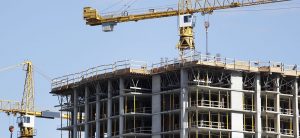- OUR APPROACH
-
COMMITTED TO YOUR SUCCESS
Our approach, developed over decades of experience, is fine-tuned to get the results you want.
We deliver concept-to-completion solutions, designed by temporary power specialists with access to the largest inventory of high-quality power generation and distribution equipment in North America.
-
- Equipment
-
RENTALS
From a wide range of diesel and natural gas generators to transformers, cable, light towers and more, our large rental fleet and extensive vendor network ensure we’ll have the temporary power equipment that your project requires — every time.

-
- Industries
-
INDUSTRIES WE SERVE
For nearly 20 years, we have been at work powering projects across Canada’s industrial sectors.
Select from this sampling of industries to learn how we can put our expertise to work for you.
VIEW ALL- Projects
- About
-
A PROUD HISTORY. A BRIGHT FUTURE.
From our inception in 1998, we have been building our team on a foundation of excellence. Our team members’ passion, expertise and commitment are what have allowed us to grow into a national company with projects across Canada.
Click on the links to learn more about our history, our team or our career opportunities.
- Blog
- Contact
-
The Smart Renewables and Electrification Pathways Program: Is Your Project a Good Fit?
Feb 23, 2022
Table of Contents:
- Is Your Project Eligible?
- How Are Projects Chosen?
- What the SREP Program Administrators Want You to Know
Do you have a project idea that would contribute to the development of renewable energy in Canada? With up to $964 million in available funding, the four-year-long Smart Renewables and Electrification Pathways (SERP) program is a boon for Electrical Contractors and others working within the renewable energy sector.
Working towards the goal of, “encouraging the replacement of fossil-fuel generated electricity with renewables that can provide essential grid services while supporting Canada’s equitable transition to an electrified economy,” the SREP program has already approved 20 projects and $346 million in funding.
We reached out to the SREP program to learn more about the kinds of projects that are eligible, what to expect from the application process, and what you can do to set your application apart.
Is Your Project Eligible?
There are three streams under which projects are currently eligible for SREP Program funding: Established Renewables, which are renewables that already produce energy for sale or use in Canada (for example, wind, solar, small hydro); Emerging Technologies, which are technologies that are already in use commercially in other countries or have been demonstrated in Canada but are not yet commercially viable or available in Canada (energy storage technologies being a prime example); and Grid Modernization, including micro-grids, virtual power plants and hardware or software development that enables grid services. The only applicants who are accepted for the grid modernization stream are utilities and system operators.
Each stream has different minimum requirements for project size:
Established Renewables:
- Generating projects: minimum net installed capacity of 4MW (AC).
- Indigenous-owned projects: 500kW AC.
Grid Modernization:
- Hardware or software retrofits: the existing project must have a capacity of 1MW or more (250kW or more for Indigenous-owned retrofit projects).
- Hardware or software to enable aggregating Distributed Energy Resources (DERs) in a virtual power plant: the aggregate capacity must be 500kW or more.
- Microgrid projects: the aggregate capacity must be 500kW or more.
Emerging Technologies:
For emerging technologies, NRCan has provided a table with minimum project size requirements for both Indigenous-owned and non-Indigenous-owned projects.
| Project Type | Minimum Size | Minimum Size – Indigenous-owned |
|---|---|---|
| Electricity Generation | 4MW AC | 500kW AC |
| Energy Storage | 1MW AC | 250kW AC |
| Deep Geothermal Heating | 40 TJ/year | 5 TJ/year |
| Building Integrated Renewable Energy | 500kW AC | 500kW AC |
| Renewable Community Heating | 10 TJ/year | 5 TJ/year |
The SREP program applicant guide notes that it is possible to bundle multiple project sites of the same technology type in order to meet the minimum project size requirement.
In addition to these project streams, there is also a fourth stream – the Capacity Building stream – which, according to NRCan, “Is intended to help communities and organizations acquire the knowledge and tools needed to develop renewable energy and grid modernization projects.”
The first call for proposals for the capacity building stream closed in November of 2021, and while NRCan couldn’t speak to a second call for proposals, they advised those who are interested to check the capacity building website for announcements or updates.
If your project will be partly or fully Indigenous-owned, the SREP program is especially worth looking into. According to NRCan, “All Program streams, including the Capacity Building stream, aim to support projects across the country while encouraging participation and leadership of First Nation, Inuit, and Métis communities.” One incentive for Indigenous-led projects to apply is the higher level of funding that is available to them. This includes up to $50,000 in grant funding for Indigenous engagement and consultation activities and funding for up to 75% of project costs for majority Indigenous-owned projects.
Are you curious about what kinds of projects have already been approved? So were we. While NRCan could not directly provide us with the projects that have already received approval, they note that those projects will soon be highlighted on their website, and that, “Once a contribution agreement is signed [for any given project], the project will be posted on NRCan’s proactive disclosure website.”
How Are Projects Chosen?
According to NRCan, “The Registration process for the Program Technology streams is designed to be simple, quick and straightforward and will determine project eligibility.”
Once a project has been registered it is screened to ensure that it meets the eligibility criteria – if you register a project that is deemed eligible, you can expect to receive an invitation within 10 days to complete the Technical and Financial Project Application.
When the complete application is submitted, a Program Evaluation Committee reviews it and provides feedback. At that point, “If there are items in the application that were deemed non-satisfactory,” according to NRCan, “the applicant is invited to update and re-submit their documents.” The Evaluation Committee will return a decision within 90 business days of receiving the complete application, if the project has met all of the requirements and funding is still available, NRCan will negotiate a contribution agreement with the applicant.
To have the best possible chance of getting your project approved, keep in mind the following:
- According to NRCan, “All project applications are evaluated based on satisfactory completion of the Application Form according to the Applicant Guide.”
- The approval process operates on a “first to construction, first served” basis, and project applicants need to be able to demonstrate that they are close to a start date for construction.
- Registrations and Technical and Financial Project Applications will be accepted until the project end date of March 31, 2025, OR until program funding runs out, whichever happens first.
If you register a project that isn’t eligible for SREP funding but might qualify for other funding sources, NRCan will direct you to those sources.
What the SREP Program Administrators Want You to Know
While NRCan was unable to provide us with any secrets to success, they did recommend a number of resources to help interested parties ensure their applications meet the criteria:
- A Frequently Asked Questions page, which addresses questions about eligibility, funding, the application process, and more. (Note the FAQ page currently covers the Capacity Building stream, specifically.)
- An Applicant Guide, which offers a comprehensive overview of the SREP program and what constitutes an eligible project.
- Appendix A of the Applicant Guide offers guidance about the registration process.
- The project registration page.
Do you still have questions about the SREP program? NRCan invites those with questions or who require clarification to contact them at [email protected].
Related Articles
Subscribe for access to exclusive content
"*" indicates required fields





















